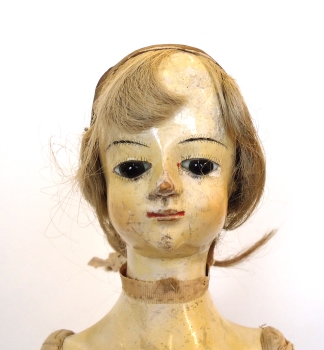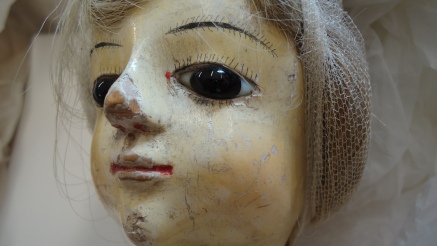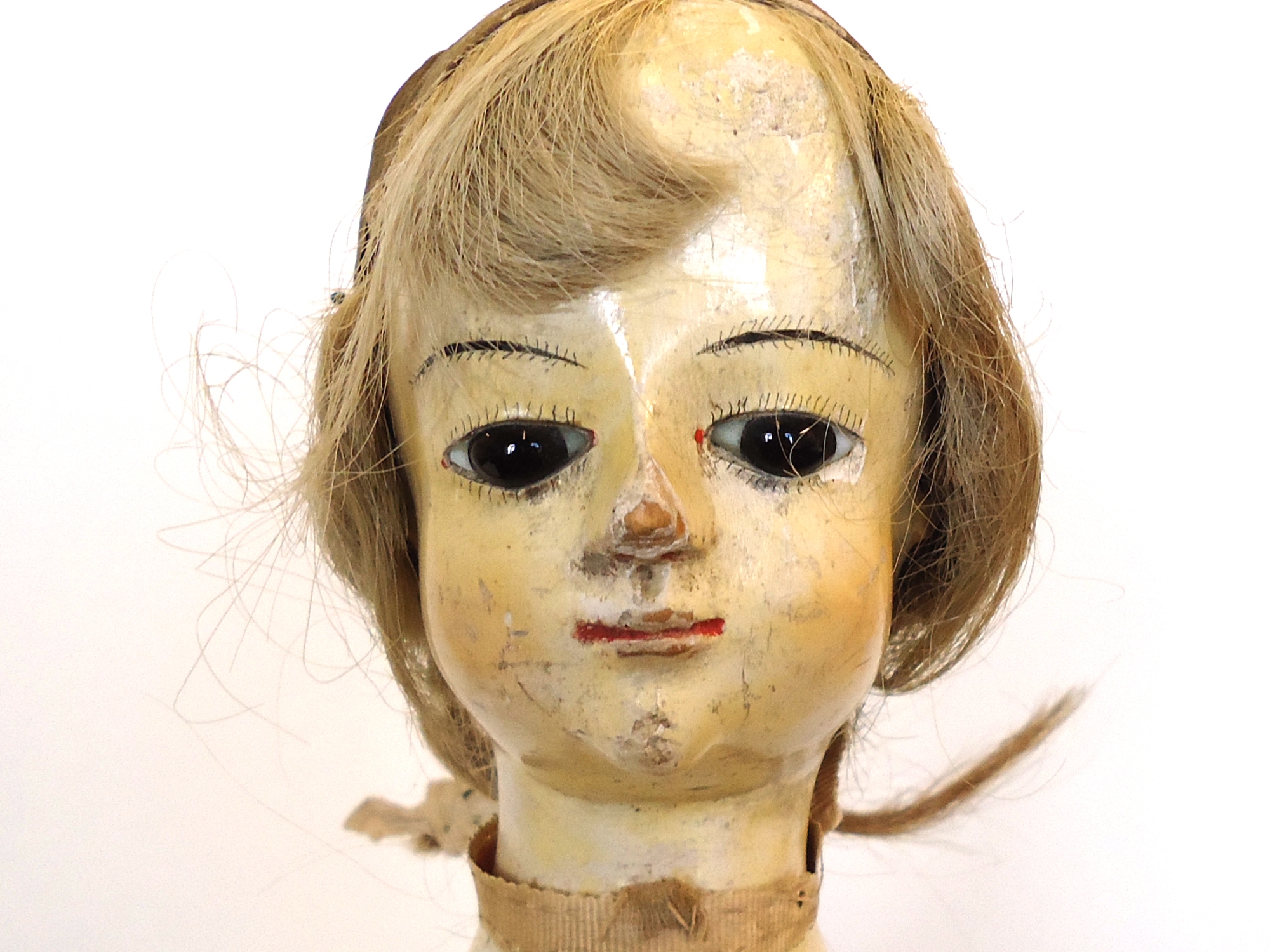Over my next few posts, I’ll be blogging about the conservation of an 18th century fashion doll from our collection [TOY.301].
The doll dates to around 1740, and has a wooden body, which has been carved, gessoed, painted and varnished. She has a real hair wig, and complex set of clothes. She has a silk damask dress, the embroidered apron may be a later addition, and a silk cap with a long streamer. She has knitted stockings, held in place with ribbons, and silk shoes. Her underwear consists of a linen shift, linen petticoat with patterned border, silk quilted petticoat, and a hanging pocket. She does not have a pair of stays, but her torso has been wrapped with a piece of fabric.
This is a ‘fashion doll’, as opposed to a child’s toy, and would have been owned by a wealthy woman. The doll has been well cared for, with neat darning on the shift and apron, probably carried out during it’s useful lifetime. The doll has had no previous conservation.

The doll was on display for several decades in a south facing room with no light control. It was removed from display in the early 1980s, and returned to storage, where it has remained ever since.

The doll, and her fine clothes, are now in a deteriorated condition, a result of that uninhibited light exposure. The resulting damage takes the form of colour loss (the original deep red colour of the silk is visible in the creases and folds), and perishing of the fabric at the shoulders, and the top of the cap. This type of damage is now preventable, by keeping light levels low for all the textiles in our collection, but the effects are irreversible.

The white linen apron, shift, pocket and petticoats are yellowed with the products of cellulose degradation, and the apron front is grey, with dust and airborne pollution.

There are small holes throughout the various textile elements, a result of mechanical damage (handling), or insect activity. Where the silk shirt of the dress has sharp pleats at the waist, these have begun to split. The painted wooden face is also in a vulnerable condition, with flaking gesso near the eyes.

The first stage of the conservation process is to fully document the object with photography, before undressing to assess the needs of each piece of clothing, and the body of the doll itself. In my next post, I’ll cover the process of washing the white underwear and apron. I’ll then blog about the latter stages of their conservation.

Katy Smith, Textile Conservator






Reblogged this on Smile Circulation and commented:
How lovely to be able to get a close up of this sweetheart
LikeLiked by 1 person
It’s a beautiful doll!
LikeLiked by 1 person
Helpful and interesting. I enjoy reading her comments at this level.
LikeLike